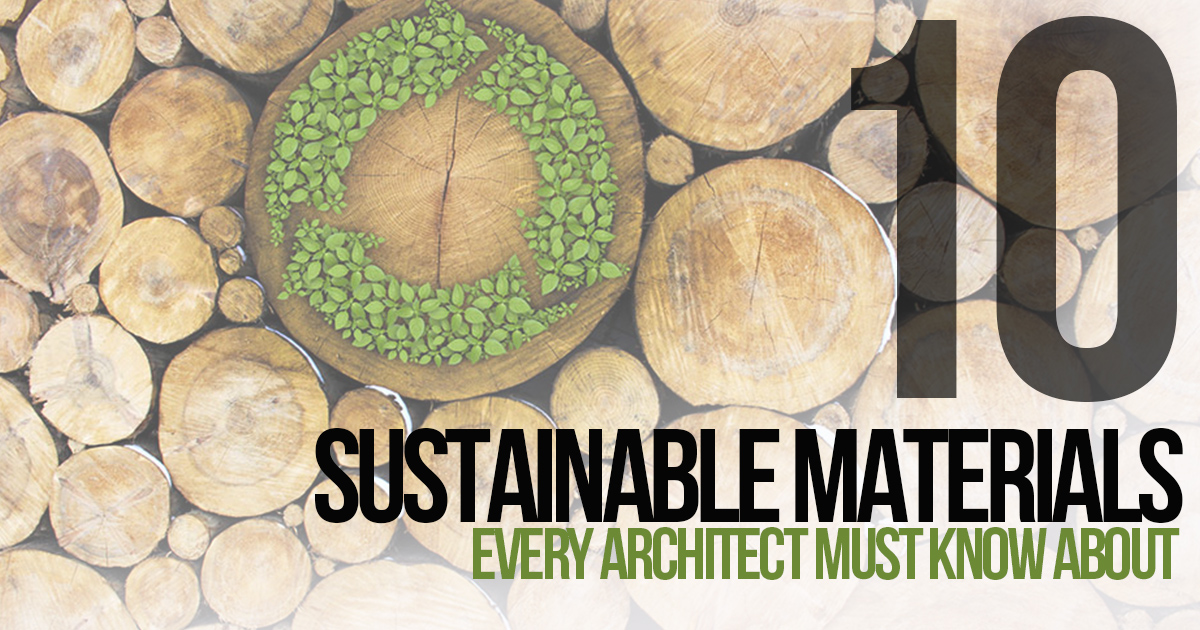How Does Architecture Respond To The Principles Of Sustainable Materials?

Hey there architecture enthusiasts, we all know that sustainable architecture is the way forward. If we don't take care of our planet, where are we going to live? One of the most important things to consider while designing sustainable buildings is to use sustainable materials. So, I've compiled a list of 10 sustainable materials that all architects must know. Let's dive in!
Bamboo
Bamboo is one of the most sustainable materials out there. It is fast-growing, requires minimal water and pesticides, and has a high strength-to-weight ratio. It's perfect for making everything from flooring to furniture to structural elements. Plus, it looks pretty cool too!
Cork
Cork is another great sustainable material that all architects must know. It's harvested from the bark of cork oak trees and doesn't require the tree to be cut down. Cork is used in everything from flooring to insulation to soundproofing. Plus, it's fire-resistant and hypoallergenic!
Recycled Steel
Another great material that all architects must know is recycled steel. It's incredibly strong and durable, plus it's made from recycled materials! It's perfect for building structures and can even be used for interior finishes.
Rammed Earth
Rammed earth is an ancient building technique that's making a comeback. It involves packing earth into forms to create walls. It's a great sustainable material because it's widely available and doesn't require any chemical processing. Rammed earth walls also have great insulation properties, keeping your building warm in the winter and cool in the summer.
Straw Bale
Straw bale is another ancient building technique that's making a comeback. It involves stacking straw bales to create walls. The straw offers great insulation properties and is fire-resistant. Plus, it's a great way to use agricultural waste that would otherwise go to waste!
Upcycled Glass
Instead of throwing away glass, why not use it in your building materials? Upcycled glass can be used to create beautiful countertops, flooring, and tiles. Plus, it's a great way to keep glass out of landfills.
Rattan
Rattan is a great sustainable material that's perfect for furniture. It is fast-growing and requires minimal water and pesticides. Plus, it's incredibly strong and durable. Rattan furniture is a great way to add a natural touch to your building while also being sustainable!
Recycled Plastic
Recycled plastic is a great way to keep plastic out of landfills. It can be used to create everything from insulation to flooring to furniture. Plus, it can be made to look like other materials, like wood or marble!
So, there you have it, folks! These are 8 sustainable materials that all architects must know. Using sustainable materials is not only good for the planet, but it's also good for your building's longevity and aesthetics. Let's make sure that we design buildings that will stand the test of time!
Frequently Asked Questions
What makes a material sustainable?
A material is considered sustainable if it is produced using environmentally friendly methods and doesn't have a negative impact on the environment in its production, use, or disposal.
Are sustainable materials more expensive?
Not necessarily. Some sustainable materials, like bamboo and cork, are actually quite affordable. Plus, using sustainable materials can actually save you money in the long run by reducing energy costs and increasing the longevity of your building.
Can sustainable materials be used for everything?
While there are many sustainable materials out there, not all of them are appropriate for every use. It's important to consider the specific needs of your building when choosing materials.
What if I can't use sustainable materials in my area?
While it's always best to use sustainable materials when possible, we understand that it may not always be feasible. In these cases, it's important to prioritize environmentally friendly practices, like reducing energy consumption and waste.
Why should I care about sustainable materials?
Using sustainable materials is important for the health of our planet and for future generations. It's also good for your building's longevity, aesthetics, and budget. Let's all do our part to create a more sustainable future!



Post a Comment for "How Does Architecture Respond To The Principles Of Sustainable Materials?"